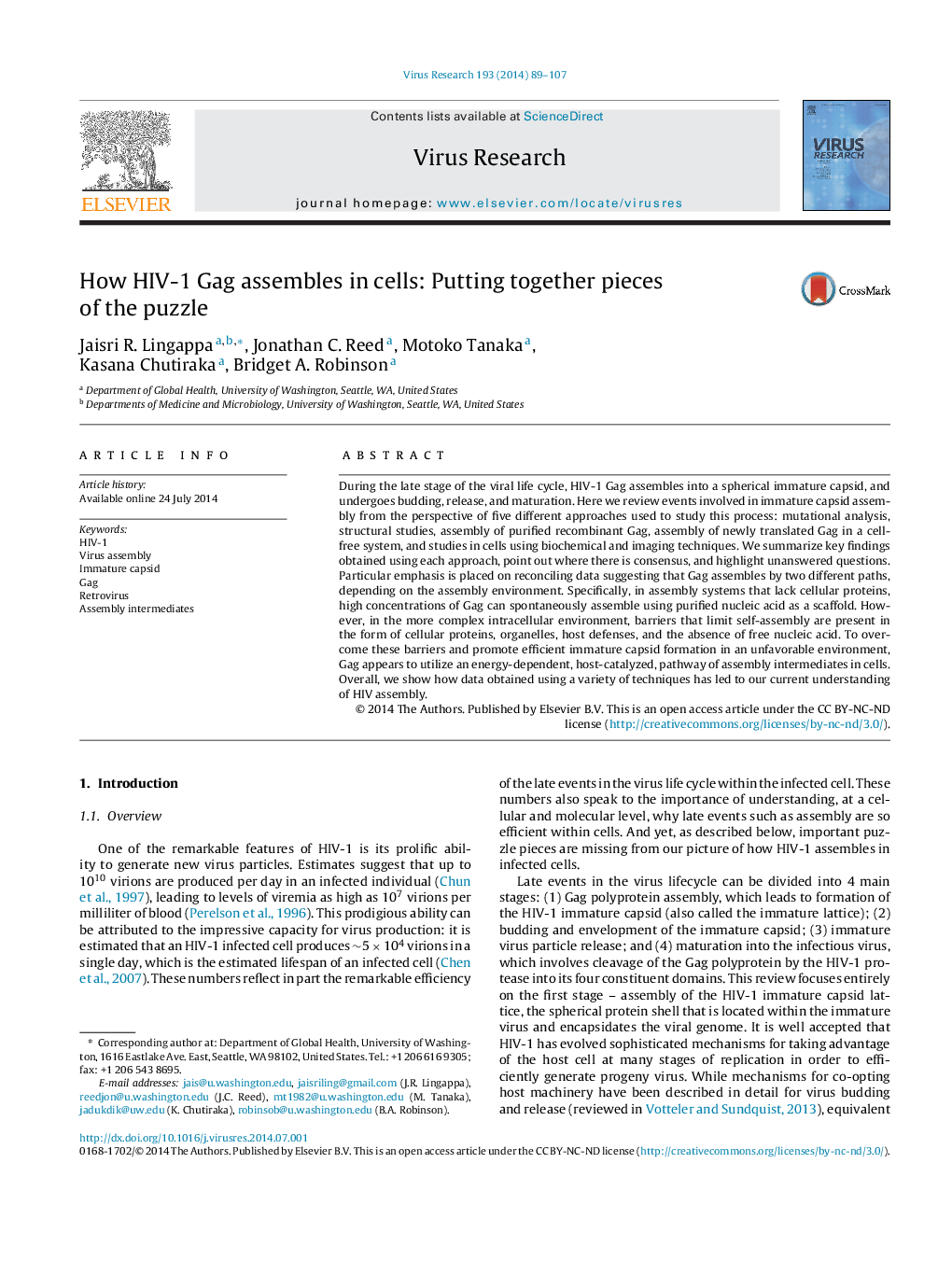| Article ID | Journal | Published Year | Pages | File Type |
|---|---|---|---|---|
| 6142325 | Virus Research | 2014 | 19 Pages |
â¢Various experimental approaches have shaped our understanding of HIV-1 assembly.â¢Here we describe complementary findings obtained with these approaches.â¢Major contributions of each approach are discussed, along with their limitations.â¢Key unanswered questions about how HIV-1 assembles in cells are discussed.â¢We also explain why the Gag assembly path differs depending on the environment.
During the late stage of the viral life cycle, HIV-1 Gag assembles into a spherical immature capsid, and undergoes budding, release, and maturation. Here we review events involved in immature capsid assembly from the perspective of five different approaches used to study this process: mutational analysis, structural studies, assembly of purified recombinant Gag, assembly of newly translated Gag in a cell-free system, and studies in cells using biochemical and imaging techniques. We summarize key findings obtained using each approach, point out where there is consensus, and highlight unanswered questions. Particular emphasis is placed on reconciling data suggesting that Gag assembles by two different paths, depending on the assembly environment. Specifically, in assembly systems that lack cellular proteins, high concentrations of Gag can spontaneously assemble using purified nucleic acid as a scaffold. However, in the more complex intracellular environment, barriers that limit self-assembly are present in the form of cellular proteins, organelles, host defenses, and the absence of free nucleic acid. To overcome these barriers and promote efficient immature capsid formation in an unfavorable environment, Gag appears to utilize an energy-dependent, host-catalyzed, pathway of assembly intermediates in cells. Overall, we show how data obtained using a variety of techniques has led to our current understanding of HIV assembly.
